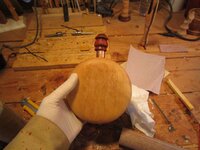greenchicken
Member
Forgive me for posting a question that has nothing to do with pens.
I made a flask. I sealed the interior with walnut oil (being a food safe finish). But once I filled it with water it sweated out through the end grain. Little beads of water.
I seal the exterior with poly so now it is water tight. But I would like recommendation for a food safe finish.
I made a flask. I sealed the interior with walnut oil (being a food safe finish). But once I filled it with water it sweated out through the end grain. Little beads of water.
I seal the exterior with poly so now it is water tight. But I would like recommendation for a food safe finish.

